Huanglong Scenic Area is located in Songpan County, Aba Tibetan and Qiang Autonomous Prefecture, Sichuan Province. It is a national 5A-level tourist attraction, a World Natural Heritage, and a World Biosphere Reserve. The total area of the scenic area is about 1,340 square kilometers, with the core area covering 700 square kilometers. It is situated at an altitude of over 3,000 meters. Featuring the "seven wonders" of colorful pools, snow-capped mountains, canyons, forests, beaches, ancient temples, and folk customs, it boasts rare travertine terrace landscapes in the world and is China's only well-preserved plateau wetland. Huanglong Scenic Area mainly consists of Huanglong Valley Scenic Area, Muni Valley Scenic Area, Xuebaoding Scenic Area, Danyun Gorge Scenic Area, etc.
History and Culture
The name "Huanglong" (Yellow Dragon) originates from the legend of Yu the Great controlling floods: it is said that the leader of the Diqiang people transformed into a yellow dragon to help Yu the Great control floods by carrying boats to dredge the Minjiang River, and finally stayed at Xuebaoding to practice. Later generations built Huanglong Temple in memory of this. Another saying is that the immortal Huanglong attained enlightenment here. According to Songpan County Chronicles, "Huanglong Temple... It is said that the immortal Huanglong practiced Taoism here". The temple is divided into three parts: the front, middle, and back temples, with their halls and pavilions facing each other.
The scenic area is a multi-ethnic settlement, mainly inhabited by Tibetans and Qiang people, who retain their primitive religious beliefs and unique folk customs. Xuebaoding is regarded as a sacred mountain by the Tibetan and Qiang peoples. It is called "Dongri" in Tibetan and "Duru" in Qiang. Religious activities such as mountain circumambulation ceremonies are held every year. Huanglong Temple is an important place where Tibetan Buddhism and local religions blend, and it houses religious relics from the Qing Dynasty onwards.
Main Attractions
Huanglong Valley
Huanglong Valley is the core scenic area of Huanglong Scenic Area, about 3.6 kilometers long. There are more than 3,400 travertine colorful pools distributed here, represented by the "Golden Sand Paving the Ground" travertine beach, the "Xishen Cave" travertine waterfall, and the "Wucai Chi" (Colorful Pools) alpine travertine pool group. The water in the pools presents colors such as blue, green, and purple as the light changes, hence it is known as the "Fairyland on Earth".
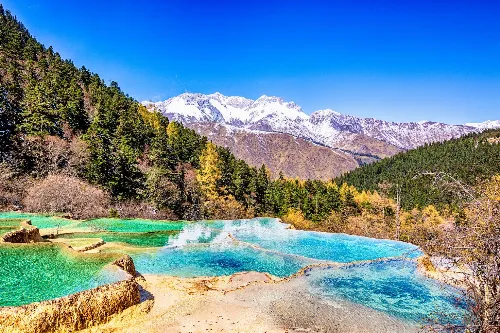
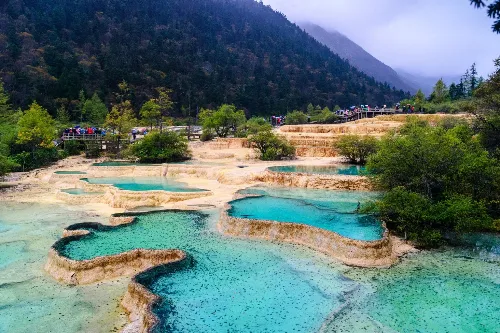
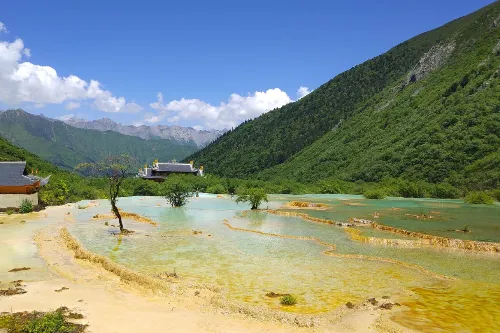
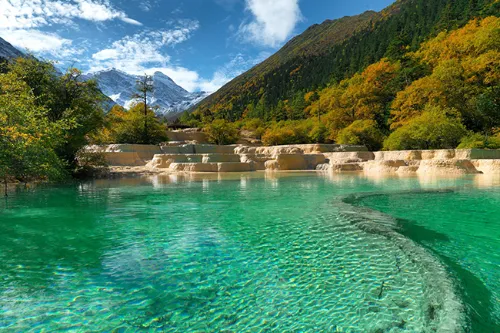
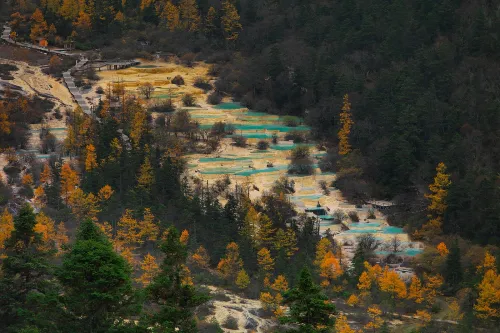
Muni Valley
It consists of Zagana Waterfall and Erdaohai. Zagana Waterfall is 93.2 meters high and 35 meters wide, being the highest travertine waterfall in China. Erdaohai is characterized by a group of alpine lakes (haizi), with the largest one, Swan Lake, covering an area of about 1.2 square kilometers. The lake water is crystal clear, surrounded by dense forests.
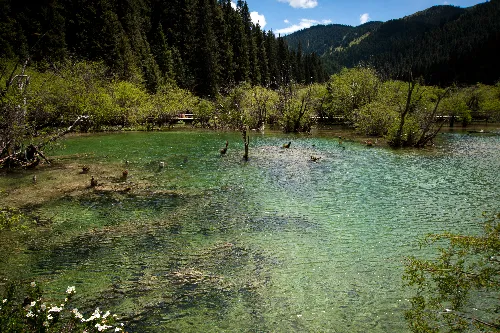
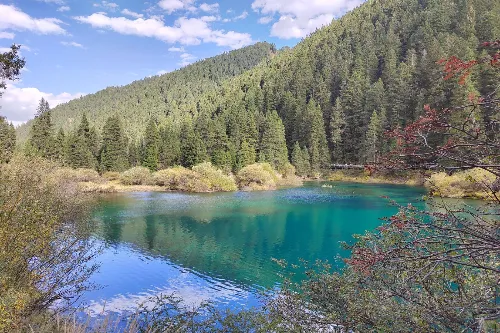
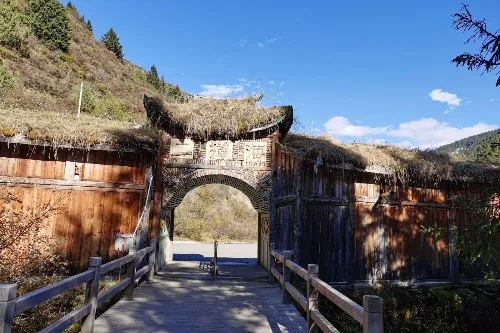
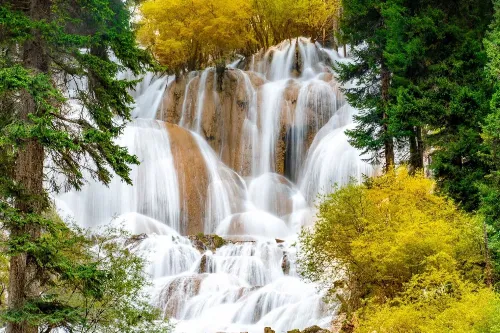
Xuebaoding
As the main peak of the Minshan Mountains, with an altitude of 5,588 meters, it is a famous mountaineering destination in Sichuan. The top of the mountain is covered with snow all year round, with developed glaciers. Alpine meadows and glacial lakes such as Round Sea and Square Sea are distributed at the foot of the mountain.
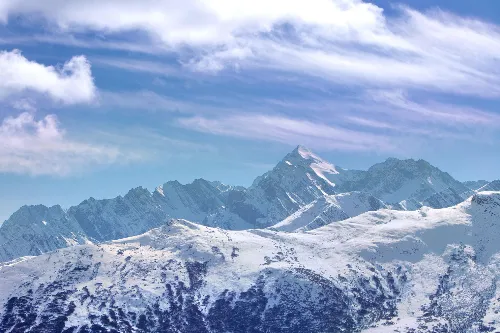
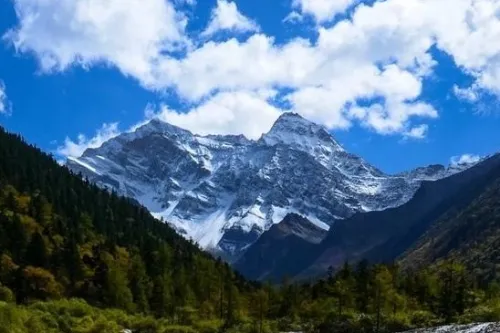
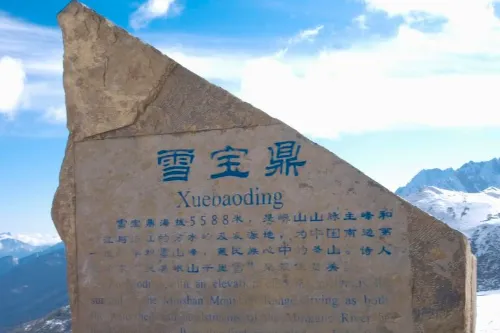
Ancient Huanglong Temple
Ancient Huanglong Temple has a long history of over 600 years. According to Songpan County Chronicles, "Huanglong Temple was built by Ma Chaojin, the Deputy Minister of Military Affairs in the Ming Dynasty, also known as Xueshan Temple". It is said that the immortal Huanglong practiced Taoism here, hence the name. Ancient Huanglong Temple is an important site for studying the evolution of religious culture in ethnic minority areas and also an important evidence for tracing the historical relics of Yu the Great's flood control at the source of the Minjiang River.
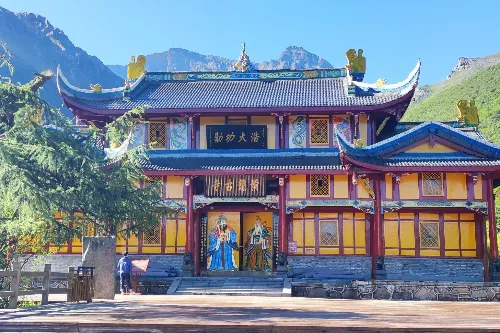
Danyun Gorge
With its beautiful canyon scenery, Danyun Gorge has become one of the "five wonders" of Huanglong. The Danyun Gorge Scenic Area starts from Yushun Qunfeng (Jade Bamboo Peaks) and ends at Shanzi Dong (Fan Cave), stretching 18.5 kilometers with a drop of 1,300 meters. The height difference between peaks and valleys ranges from 1,000 to 2,000 meters.
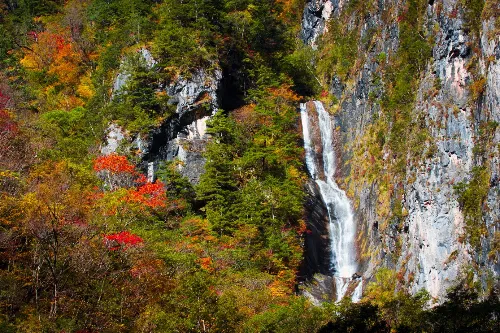
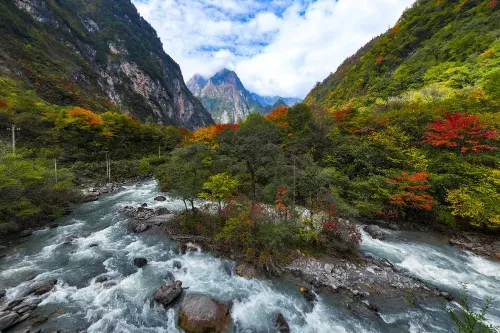
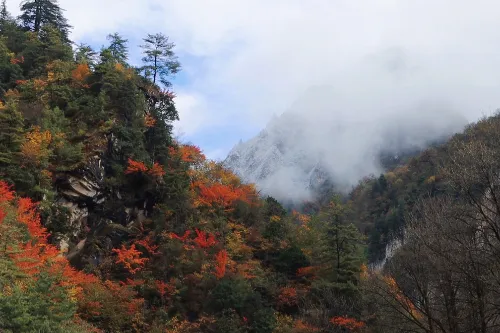
Tour Routes
One-day Tour Route: Scenic Area Entrance → Take a sightseeing bus to the cable car lower station → Take the cable car (or walk) to Wanglongping → Walk past Golden Sand Paving the Ground → Xishen Cave → Ancient Huanglong Temple → Wucai Chi (Colorful Pools) → Return the same way or walk down the mountain
Two-day Tour Route: Visit the core area of Huanglong Valley on the first day; Go to Muni Valley on the second day, visit Zagana Waterfall in the morning and Erdaohai in the afternoon
Travel Suggestions
- The temperature difference between day and night in high-altitude areas is large, so it is necessary to prepare warm clothes such as down jackets and scarves.
- Ultraviolet rays are strong, so bring sunscreen (SPF50+), sunglasses, and a sun hat.
- It is recommended to walk slowly, avoid strenuous exercise, and take Rhodiola in advance to prevent altitude sickness.
- There are few catering options in the scenic area, so you can bring portable foods such as chocolate and energy bars.
- Respect local religious customs: take off your hat when entering temples and no photography is allowed.
Notes
- The scenic area is at a high altitude (3,000-4,000 meters), so people with hypertension or heart disease should proceed with caution.
- Roads are icy in winter, so wear non-slip shoes, and some sections are closed.
- Smoking and littering in the scenic area are strictly prohibited to protect the plateau ecological environment.
- Follow the arrangements of tour guides or scenic area staff, and do not enter unopened areas without permission.
- Check the weather forecast in advance and avoid going on rainy days (as mudslides may occur).
Transportation
- Plane: It is about a 1-hour drive from Jiuzhaigou Huanglong Airport, and there are direct buses from the airport to the scenic area (fare is about 22 yuan).
- Bus: Chengdu Chadianzi Bus Station has daily buses directly to Songpan County (fare is about 100-150 yuan, journey takes 6-8 hours). The drive from Songpan County to the scenic area is about 1 hour (bus fare is 15 yuan per person or shared taxi is 50 yuan per car).
- Self-driving: Chengdu → Dujiangyan → Wenchuan → Maoxian → Songpan → Huanglong (the whole journey is about 350 kilometers, taking 5-6 hours; attention should be paid to the safety of plateau mountain roads).
Opening Hours
Peak season (April 1 - November 15): 08:00-18:00
Off-season (November 16 - March 31 next year): 08:30-17:00
Note: The Xuebaoding area is a high-altitude region, and some sections are closed in winter. It is recommended to consult the scenic area in advance.
Tickets
Peak season (April 1 - November 15): 170 yuan per person
Off-season (November 16 - March 31 next year): 60 yuan per person
Note: Muni Valley Scenic Area sells tickets separately: 70 yuan per person for Zagana Waterfall and 70 yuan per person for Erdaohai. Sightseeing cars and cable cars are charged separately: 80 yuan for upward trips and 40 yuan for downward trips.
You can search for the official WeChat public account of the scenic area "黄龙" to get the latest updates or buy tickets online.
Online Booking
Click here to jump to the Trip.com ticketing platform for ticket purchase.


